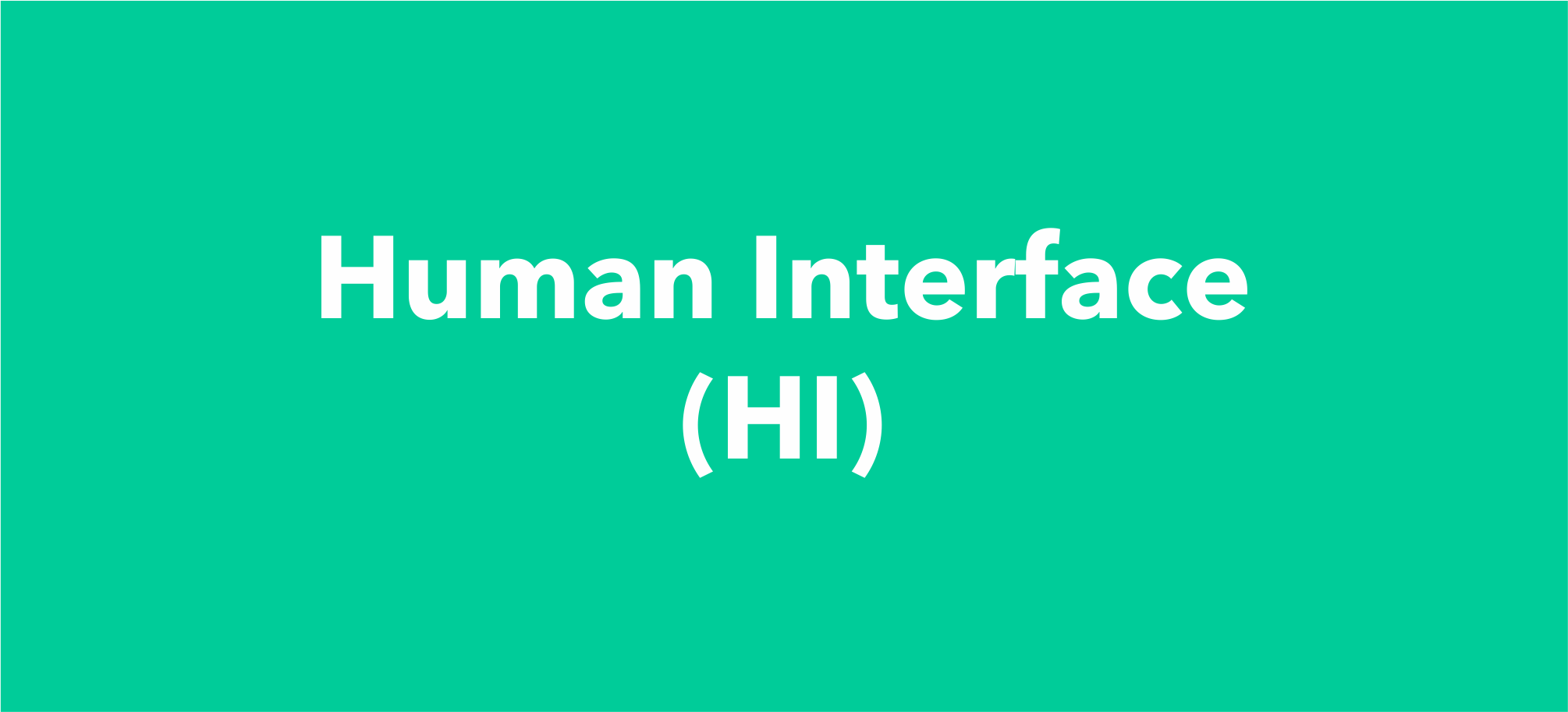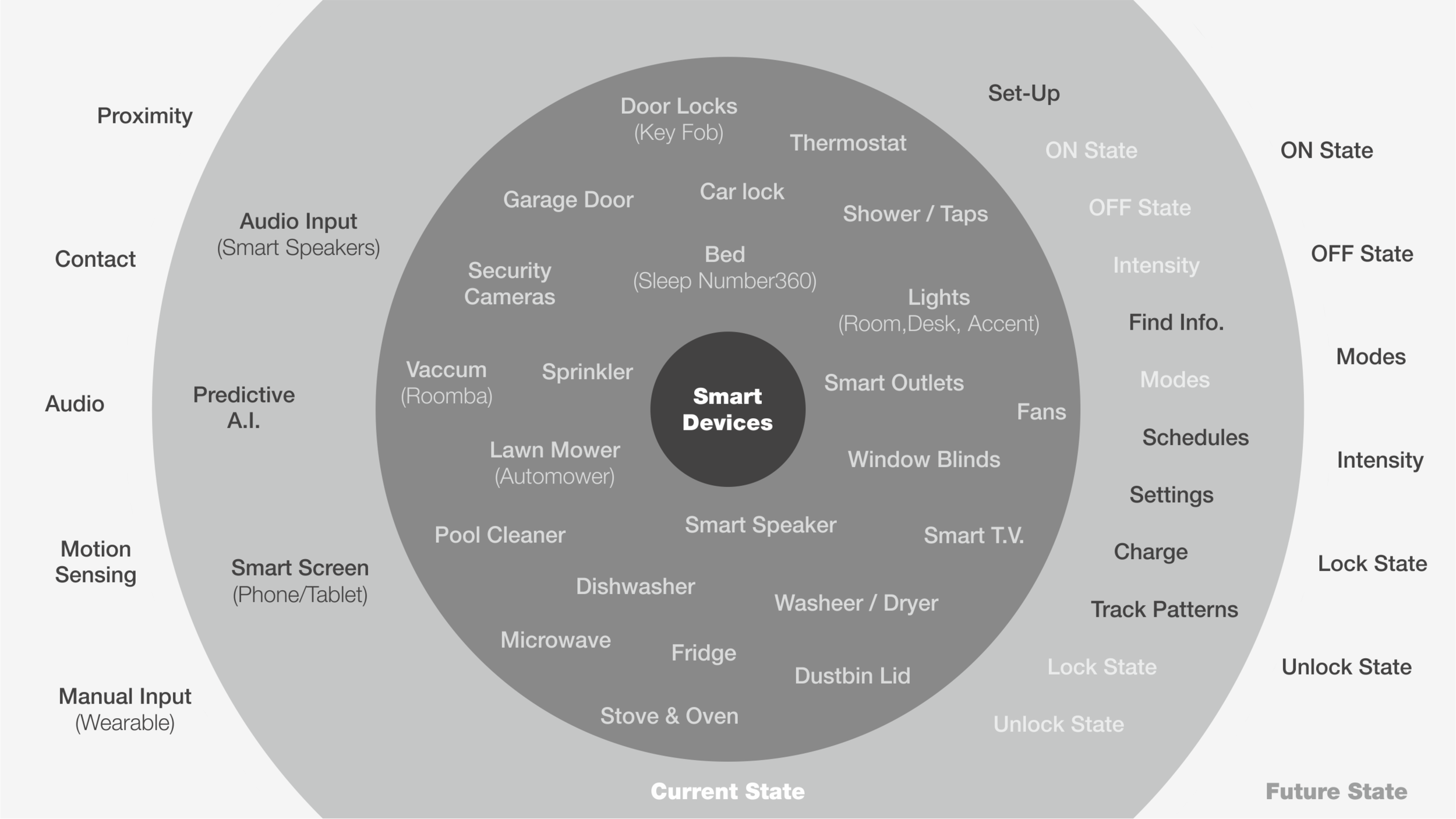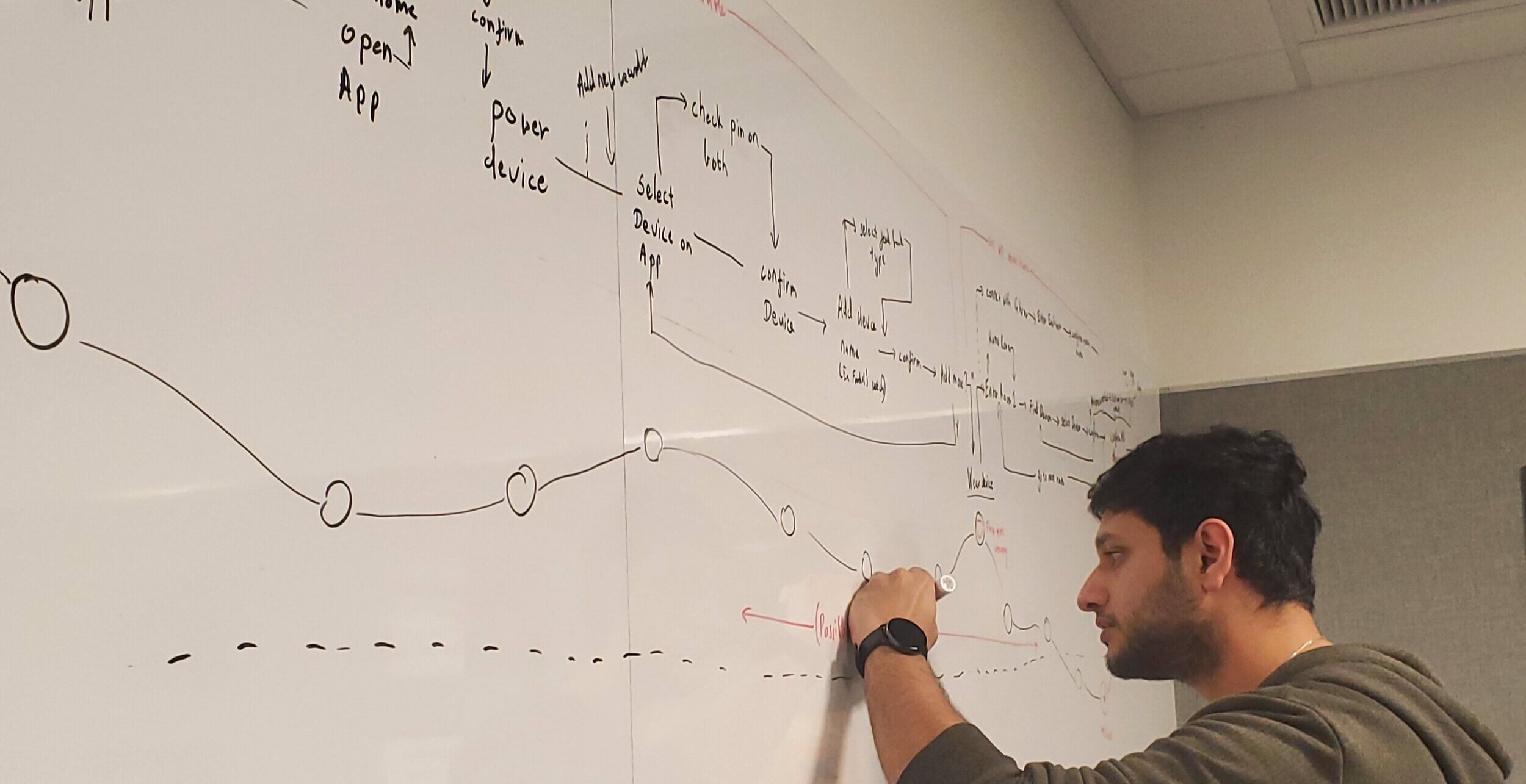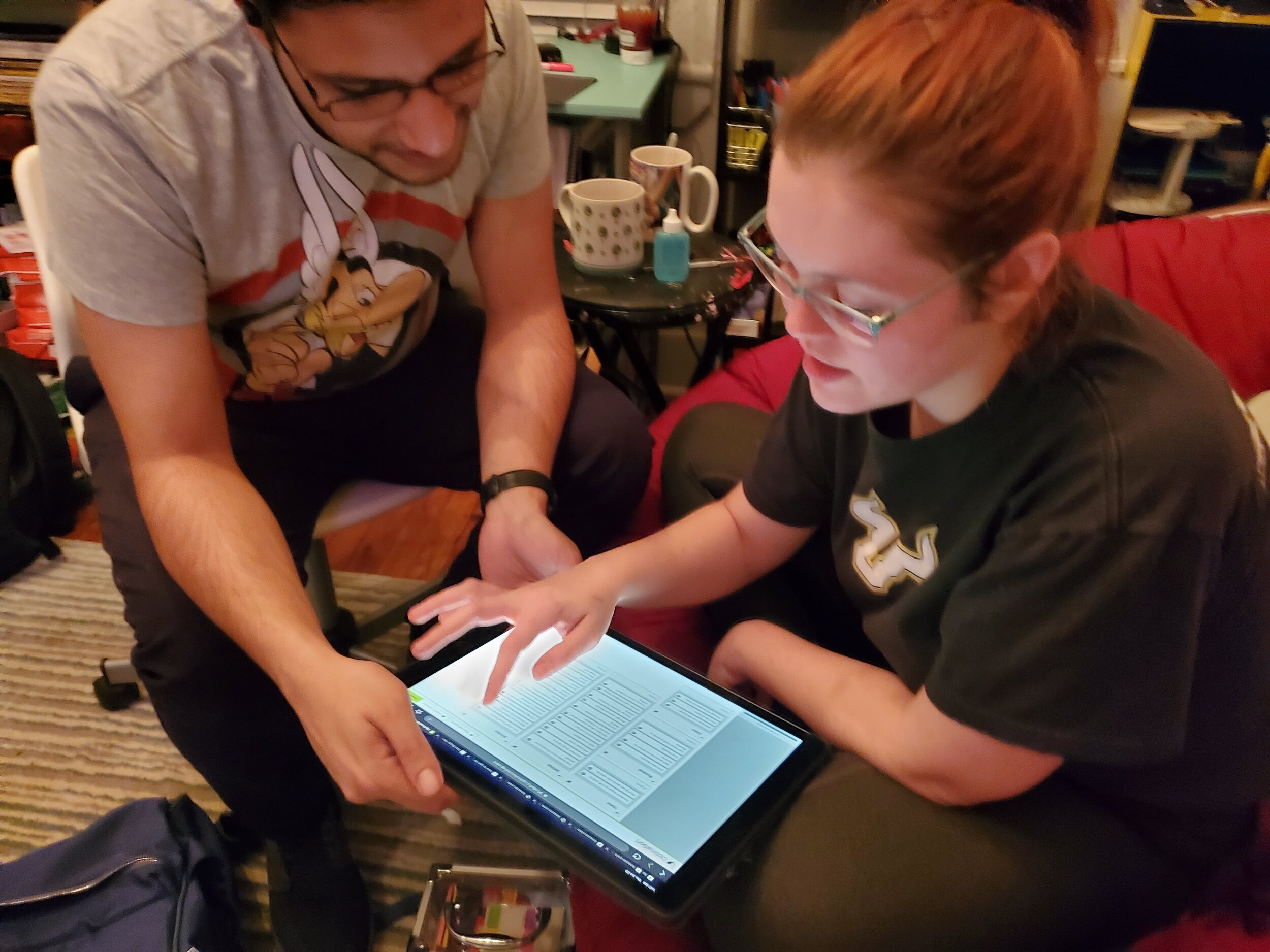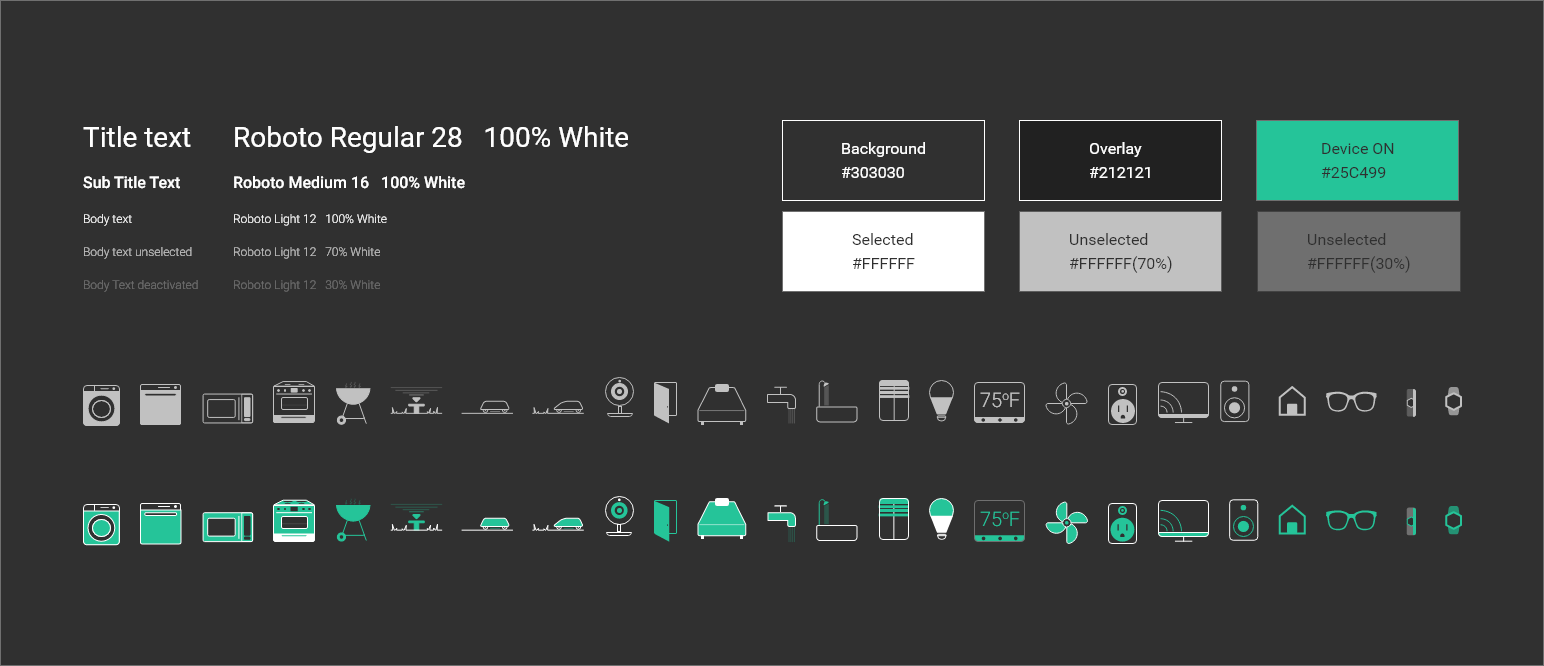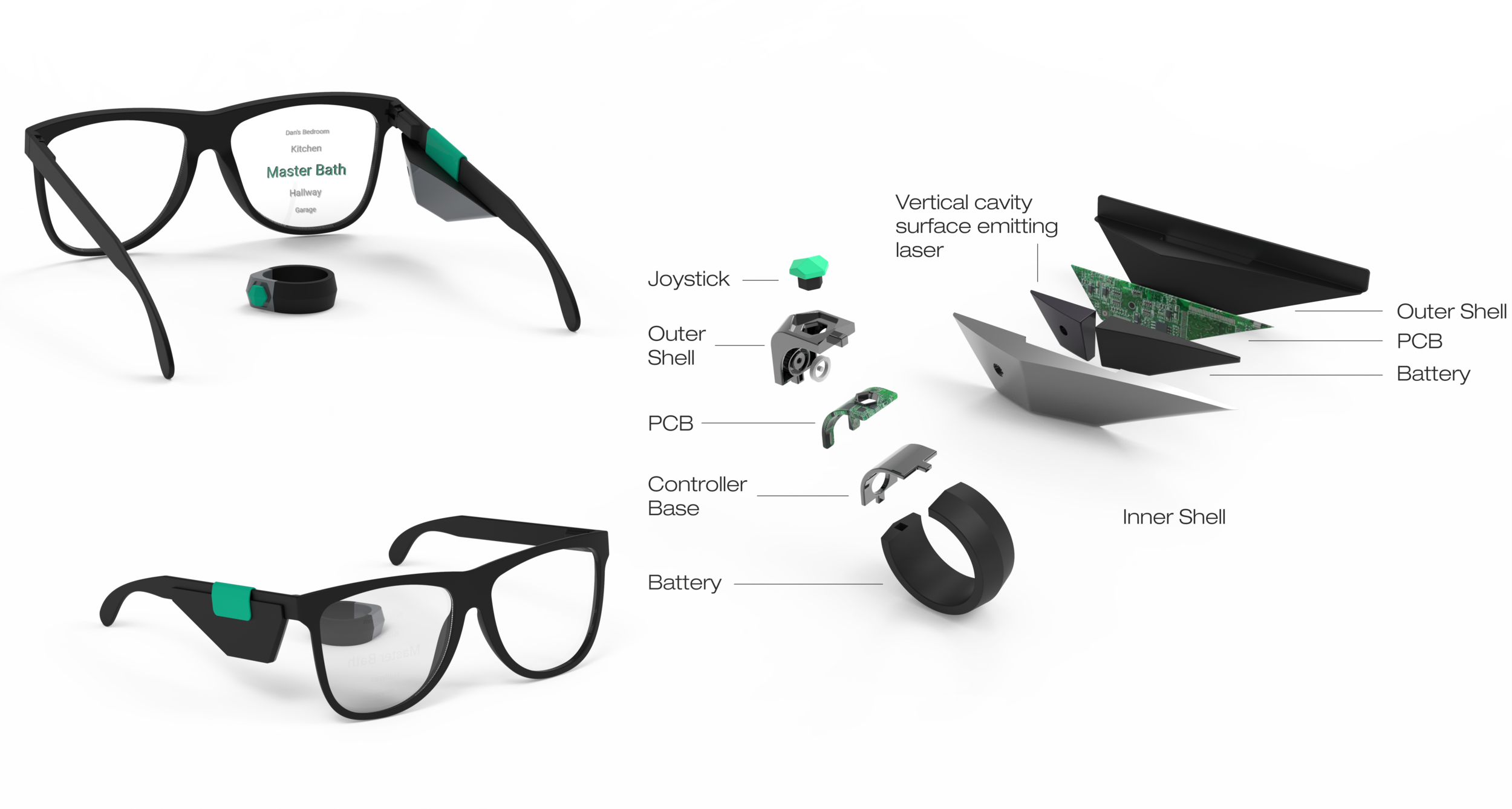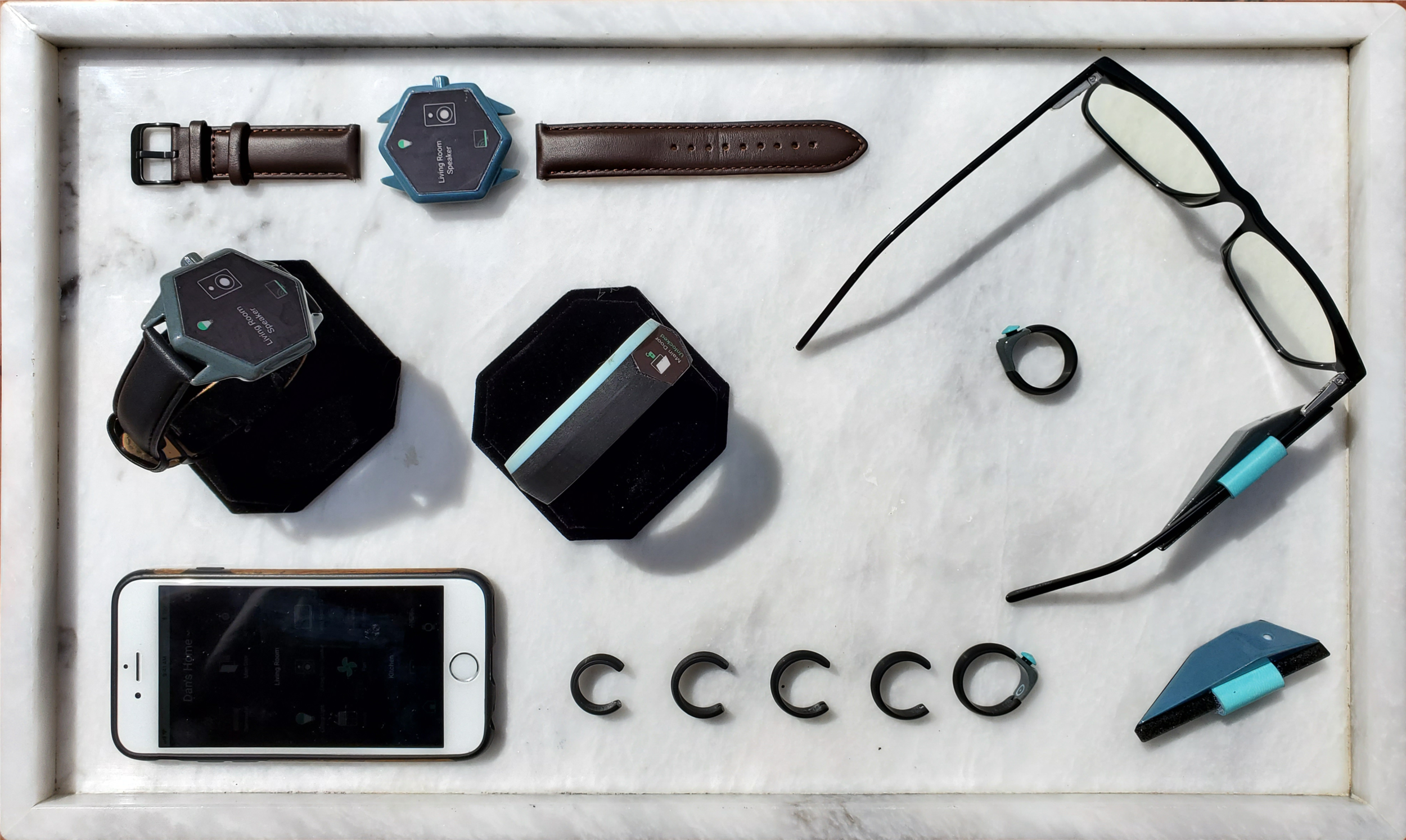Human Interface
SOLUTION
This project aims at developing an improved method of interaction with Ambient Intelligence Environments (AmI) to enhance human experiences in daily life.
Human Interface creates a more intuitive and natural system of interaction using Wearable Technology more effectively in the home environment.
CHALLENGE
Over the past decade, computing technology has evolved alot. The interactions for this technology however has not and we still stick to the age old idea of adapting to the machine infront of you.
There is need for a more meaningful interaction and experience with computing technology that makes humans the center of interaction.
How might we make Interaction & Experience (IU/UX) more meaningful within a Ubiquitous Computing (UC) System using Wearable Technology (WT)?
UBIQUITOUS COMPUTING (UC) & AMBIENT INTELLIGENCE (AmI)
The concept of Ubiquitous Computing (UC) put forth by Weiser in 1991, is a human-centered approach to computing technology where Machines fit the human environment instead of forcing humans to enter theirs. (Kerasidou & Charalampia, 2017)
This idea has today evolved in the concept of Ambient Intelligence (AmI) environments that are aware of the people present within them (Jose, et al. 2011) and anticipate user needs without user intervention. AmI achieves this with devices of modern life that are fused with computational technology and sensing capabilities.
Sensing styles
There are 2 major modes of sensing an environment. A combination of the two styles of sensing, could lead to a more defined system where one solves the problems of the other.
A combination of these 2 styles of sensing could lead to a more defined system where one solves the problems of the other, where the user is still the center of interaction but their actions are read and translated using an intermediate wearable device.
A wearable, however, is more like a piece of clothing than a PC or an appliance, and clothing has been shown to help define identity and supply clues to categorize oneself and others in the culture. (Kelly & Gilbert, 2016)
A significant departure from what is considered normal in current society can lead to the rejection of the technology. It therefore becomes very important to identify a balance between form and interaction to promote adoption of this concept.
USER RESEARCH
Phase I
Phase I of the research focused on Gauging users’ feelings towards WT devices & Identify a balance between invisibility and interaction. Participants were asked to interact with three WT devices in a predetermined scenario observation study conducted in private & public spaces.
Phase II
For phase II participants were asked to take photos of inconveniences faced in & around house. The goal of the participatory photo interviews was to get a glimpse of participants’ everyday rituals and identify problems faced that AmI can positively influence
Insights
Limitations of A.I.
How might we build trust in AI ?
Markovic’s Paradox
“We can teach machines to solve the hard problems, but it's the easy ones that are difficult”
-Hamer A. 2018
Project Reframe
How might we create a more intuitive/natural system of interaction using Wearable Technology more effectively in a home environment?
The concept of human interfaces moves away from the idea of users interacting with technology and instead focuses on technology that interacts with humans.
A method of interaction that uses human attributes like, gesture, location and biological readings to control the AmI environment around them.
Typical actions to activate interfaces are hidden within larger actions, making the change in state invisible to the user.
The challenge here would be to create a way to create a higher level of ambiguity without loosing trust in technology. As a result of this, feedback and manual overrides become very important to keep user trust intact.
This concept is similar to AI in predicting user needs without user intervention. However, instead of using machine learning (as most smart devices do today), HI uses natural human actions to predict user needs.
BUILDING TRUST IN FUNCTIONALITY
- Control when and how the system and smart devices behave
- Introduce clear feedback that informs the user of changes in states
- Allow manual override to change states personally
CURRENT/FUTURE STATE MAP
I started looking at popular smart devices available today and mapped their current use with my proposed future state of use to identify modalities and functionality of interaction with the device ecosystem.
INPUT MODALITIES - HI actions | Manual Controls | Decision v/s Suggestion
CENTRAL COMMAND - Ecosystem & HI Set-up | Ecosystem Fail-safes
DEVICE GROUPS/MODES - Active | Inactive || Home | Away | Sleep
User Experience Maps
Based on research from phase 2 & 3, I put together experience maps that focused on their negative feelings to understand hoe they can be improved.
DEVICE ECOSYSTEM MAP
Next, I tried to understand device connections and how each smart device can influence others based on the journey maps. I found that the more devices a user has the more completely it will function.
Further, certain devices like the smart bed can also be used to address sensing limitations during sleep mode (when the device is charging).
Wearable Device CONSIDERATIONS
The wearable device acts as a key to access the Ambient environment around the user.
Form Ideation & Development
Considering that users interact with most objects & environments with their hands, it makes most sense for the wearable to be in that area. Based on participant feedback from Phase I and in later interviews, the following 3 forms were selected.
I further did a pro-con analysis to compare the forms against each other and devices from Phase I.
ITERATION I
Based on user feedback, I further explored the selected forms that would merge into everyday objects. The devices had to be small enough to go unnoticed by others, but still provide clear feedback and control.
While in this stage, it became obvious that one form could not fit every user’s needs pertaining to ambiguity. As a result, I decided to work with a range of devices that could target a larger audience.
Ecosystem and UX design
As a starting point I identified major functions that the app and wearable need to perform. These were broken down further into features and used tor a card sorting analysis.
HIGHER LEVEL BLUEPRINT (ASSISTANT APP)
To help build the blueprint for the assistant app, I performed a card sorting exercise to gain an understanding of what the user’s mental models were.
Lo-Fi WIREFRAMES
STYLE GUIDE
The style guide defines visual language for the app and wearable
HI-FI WIREFRAMES & QUASI EMPIRICAL USER TEST
After building the Hi-Fi prototype, a user test was done to identify gaps in the app’s flow and confirm that it matches the users’ mental models. Participants were asked to perform predefined tasks. The user test brought some user flow flaws to light and were addressed in the final prototype.
WEARABLE STATE DIAGRAM
The WT digital user flows and feedback systems were represented using state diagrams that match the app’s flows and visual style.
The state diagrams to visually represent the flow of interactions for the wearable. The 2 major functions are invisible action feedback and manual control.
Hive Mind
Hive mind is more than just another wearable. It is the key to your home. Hive Wear performs smart device tasks by reading invisible human actions and relative position thus making the user the center of interaction. It also provides feedback of invisible actions and manual control of smart devices to help build user trust in the technology & compensate for human tendencies.
You can chose from 3 devices that fit your needs.
Hive Band
The hive band is a sleek 10mm wrist band with a feedback screen. The controller on the right can be used to quickly find the device you need and set it the way you want.
Hive Watch
The hive watch comes with a larger 44mm screen. the hexagonal screen creates a balance between a typical watch face but is still highly optimized for scree real-estate.
The watch uses a crown that performs the required control actions of scrolling, selecting and going back.
Hive Lens
The top of the line Hive lens uses retinal projection to give the user a feeling that their ordinary glasses are a screen. The hive lens comes with a control ring that allows you to navigate through your smart devices with ease
How it Works
The wearable has 4 major functionalities that it can perform within the the ecosystem:
HI Decision Making
These are actions performed automatically by the device based on Human Interface.
Ex. Walk into the room >> Lights turn on
HI Suggestions
These are suggested actions performed based on Human Interface & user input.
Ex. Sit on Couch >> Turn on TV ? >> Yes/No
Shortcut Toggles
These are quick access manual actions that the user can perform through the wearable.
Ex. Someones at the door >> Scroll to door Icon >> Toggle Unlock
Manual Device Control
These are Room specific manual controls for each smart device in the system.
Ex. Too much Sunlight >>Find Room >> Find Blinds >> Set blinds
hive mind app
The Wear comes with an assisting Hive App that acts as a fail safe for the Wear and also performs more complex actions like setting up new devices & Wear Routines
Central Control
The home tab displays all connected devices, segregated by room that can be controlled through the app via:
-Discrete Control
-Discrete + Variable Controls
-Discrete + Variable + Media Controls
Additionally, there are (user generated) device toggle shortcuts at the top of the page for quick access to certain devices.
Connected Wear
The wear tab shows users (and their wear devices) connected to the home. Next, it shows the mode that the wearable is in, based on its state:
-Home
-Away
-Asleep (charging)
It further shows “Routines” that are activated by the wear device when performing specific actions. These actions, and the devices they control can be set here in this tab.
New Additions
The dedicated add button on the top left corner of the home tab allows for quick set up of new devices, wear devices & routines. Additionally, devices can be added from settings menu on the top right.
Routines can also be added/imported within the set up process to save time and effort.
Prototype
WIZARD OF OZ (WoZ) TESTING
To gauge user acceptance of form and interaction within this system and identify possible flaws and pitfalls that could lead to failure, a WoZ prototype was conducted using one of three WT devices (with screen prototypes) and a phone with app prototype. A researcher walked with participants and enacted WT feedback while a second researcher controlled smart devices in the space via another phone.
Takeaways & Further study
Research & design as a process never ends
This project provides an initial set of principles that help build a criteria list for the development of wearables to function as communicators within AmI Environments & defines parameters to assist the adoption of invisible technologies. However, further research needs to be done on the specific areas of shared space interactions, human interaction tendencies with their environments, device platforms & compatibility, and connected device ecosystems. While this thesis focuses on moving away from screens and making humans the center of interaction, there is still a need for some screen interactions, which seems counterintuitive. Much more research needs to be conducted before we can completely move away from the concept of “adapting to the machine in front of you.” I hope that the findings in this project and subsequent research paper are a step in the right direction to achieve a true ubiquitous system of interaction that makes technology more accessible.
User research, collaboration & testing is key
This project highlights the importance of user research, mental models, and continuous collaboration with them throughout the design process in order to develop a product that truly holds value to the user. This project thought me that design gives us an opportunity to develop user-focused products that are an extension of themselves and help define their identity.
Failing Fast and living in complexity
Failure is not necessarily a bad thing. Sometimes failed methods and unreliable results teach you the most and make you adapt and pivot in order to solve the real issues. Complexity takes time to unravel & synthesize, don't rush the process of absorbing and reflecting. It often helps you see things you would otherwise miss.












